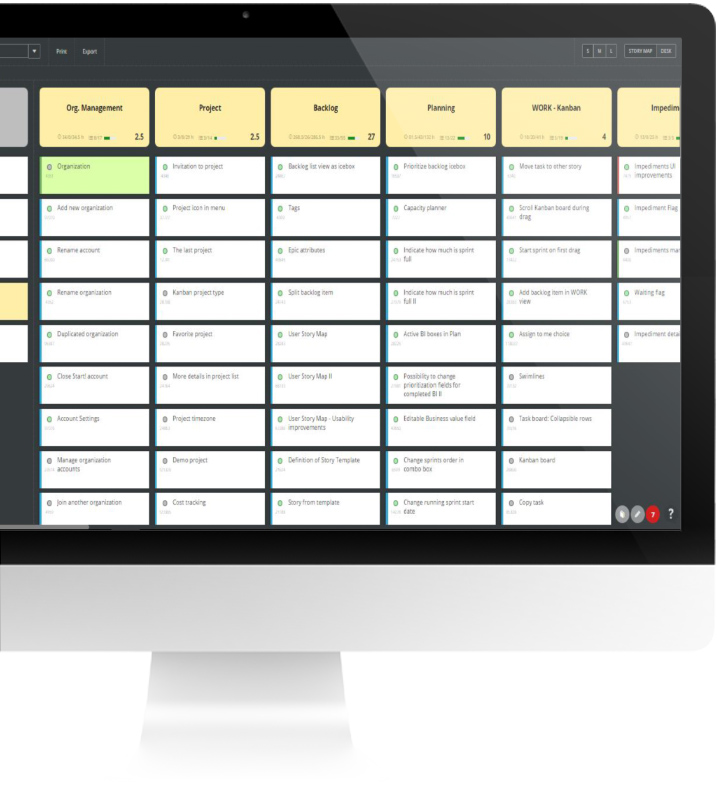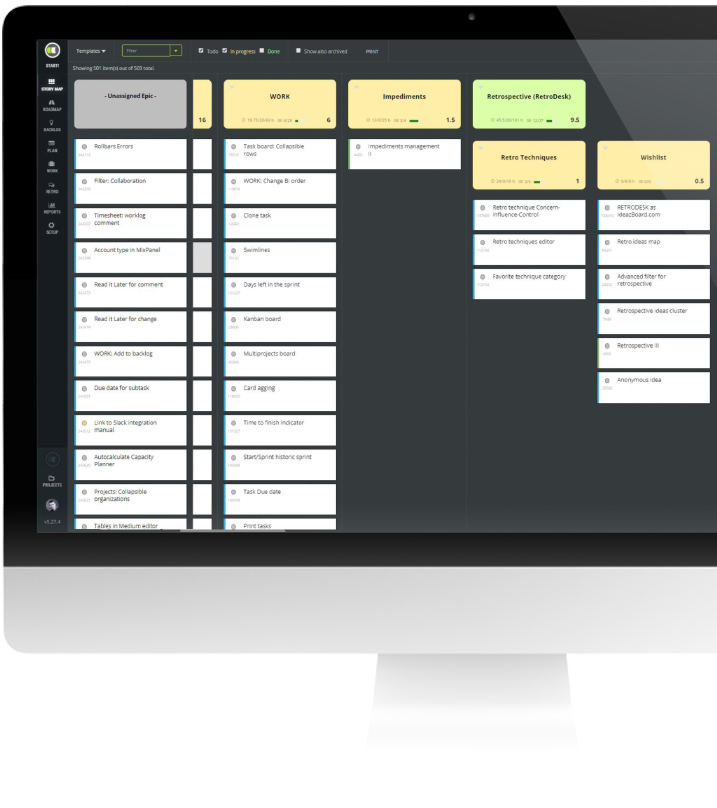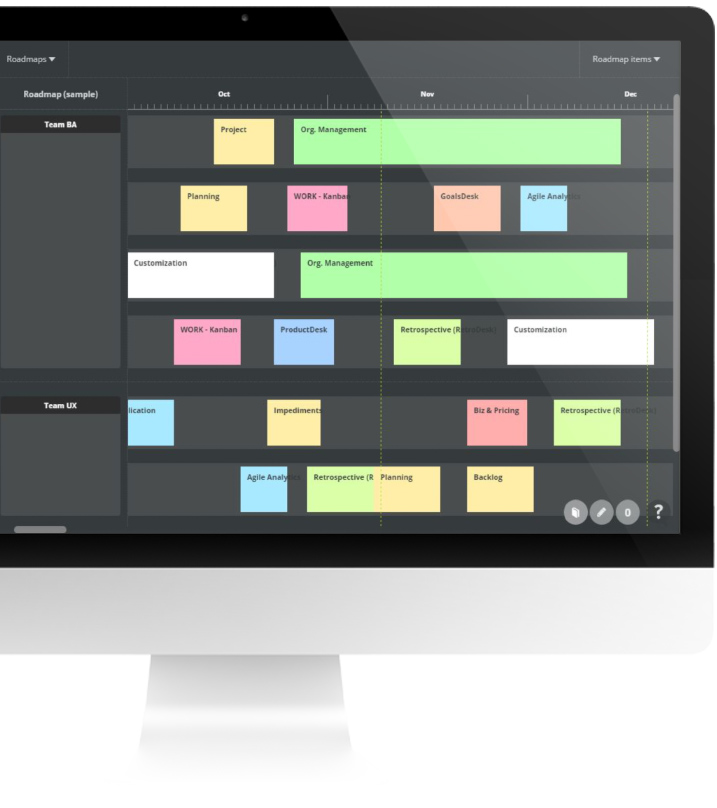
User stories mapping
Build your backlog in minutes.
Introduce transparency into your product backlog with a user stories map. Break down complex themes into epics, features and user stories. Change colors to find important requirements fast. Change the scale to see more details or the bigger picture. Move and prioritize cards by drag and drop. Select multiple cards to edit them at once.
Multiple levels hierarchy
Understand your product.
Products grow fast. So will grow the complexity of your product backlog soon.
If you want to deliver outputs fast, make complex requirements smaller. It is easier to prioritize then and select the most valuable user stories for your Minimum Viable/Marketable Product.
Five levels of requirement allow you to see the right thing in front of you.


Roadmaps
Plan milestones and delivery of your product.
In Agile you plan often and regular. But good agile planning doesn’t focus on a short time period only.
Meaningful Agile planning is focused on 5 levels. Roadmaps in ScrumDesk give an outlook for mid- and long-term perspective.
Create multiple roadmaps. Plan epics and features on a timeline. Add multiple milestones.
Compare your plans and reality once the development has been started.
How to do user stories mapping?
Sample: CRM system in ScrumDesk | How to manage complex product backlog with help of themes and epics | How to write user stories
Are you looking for more information? Contact us via chat or contact form.
